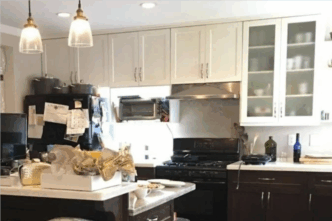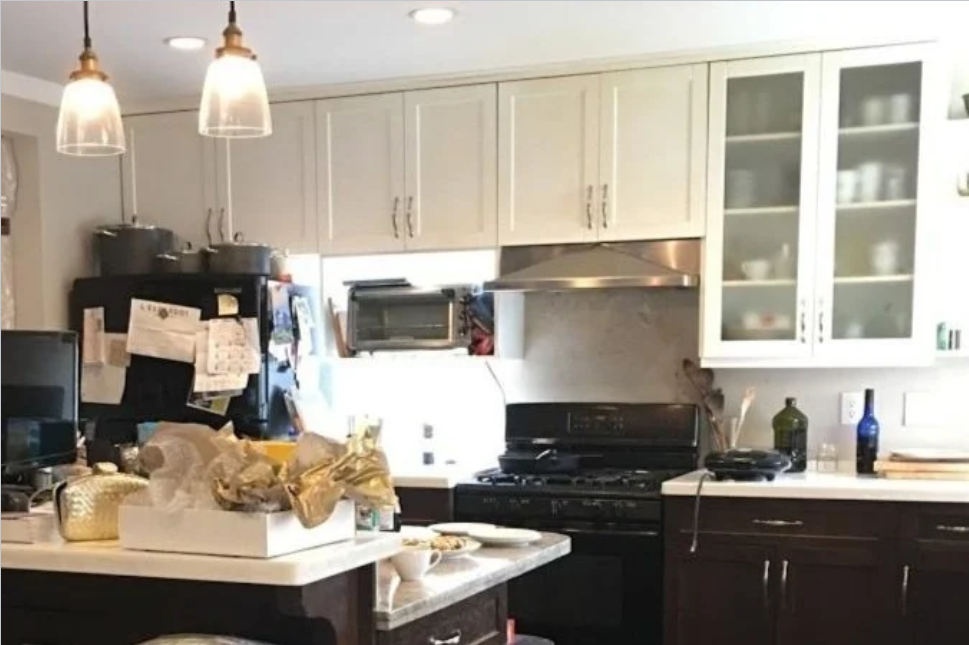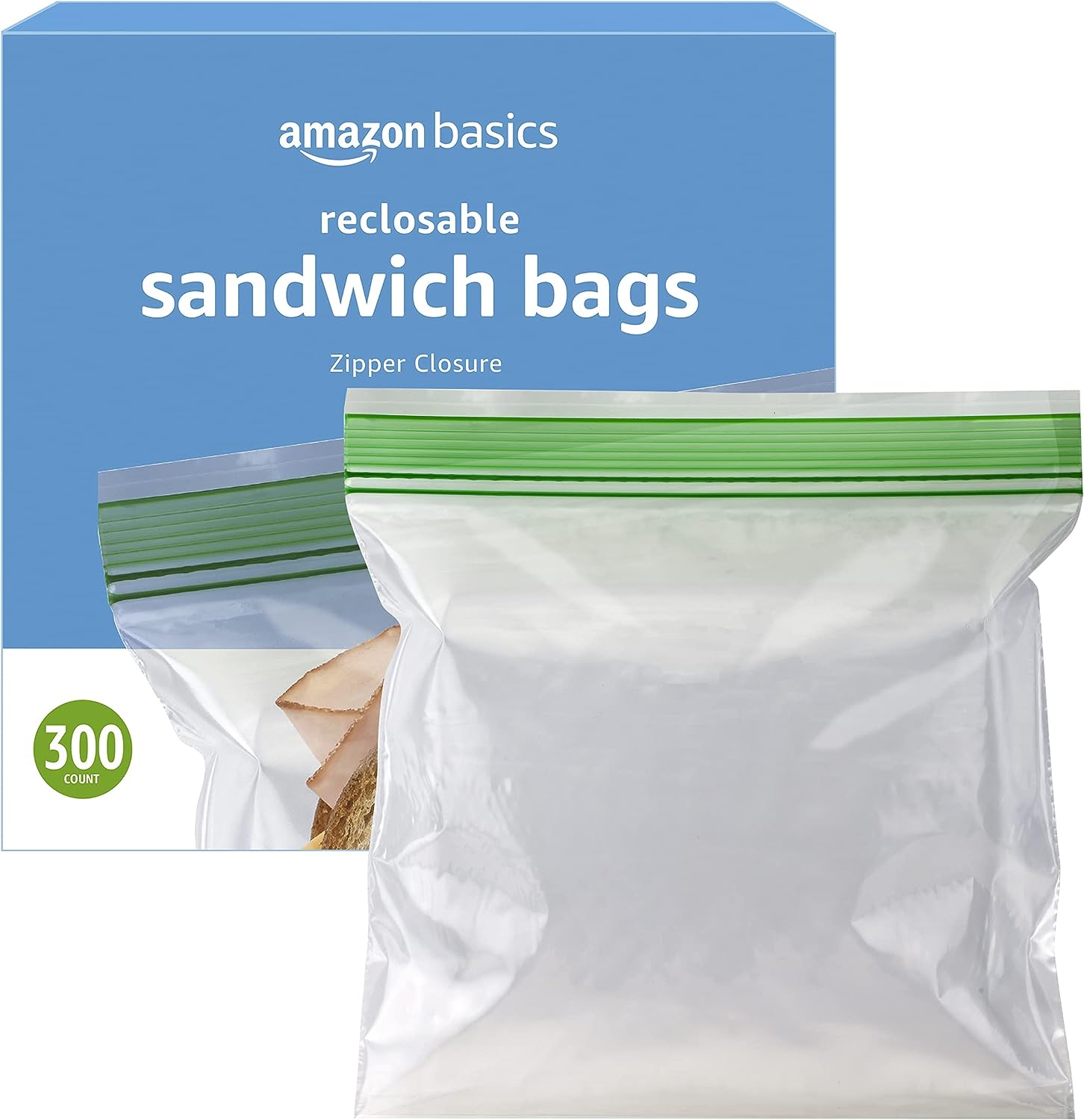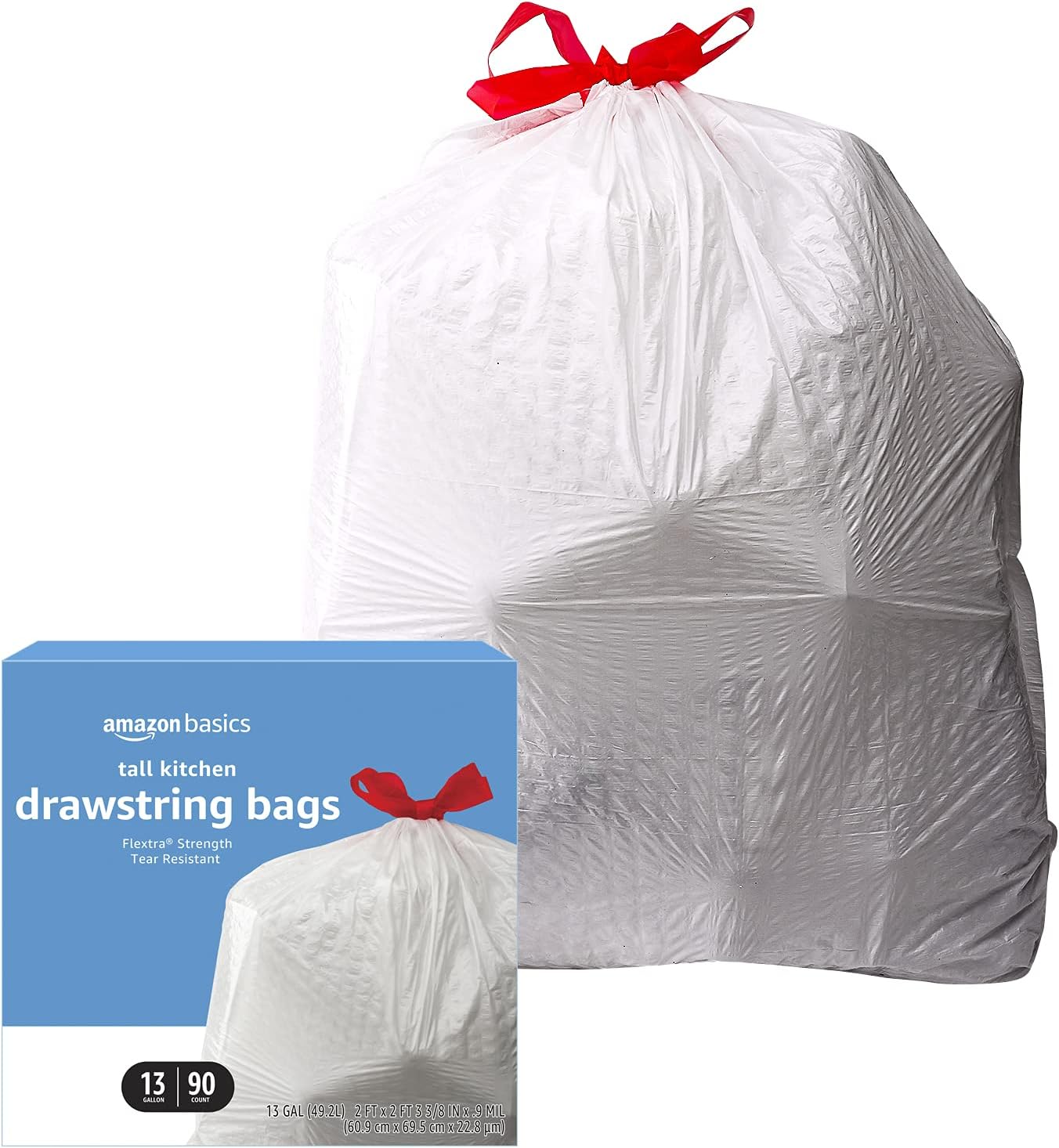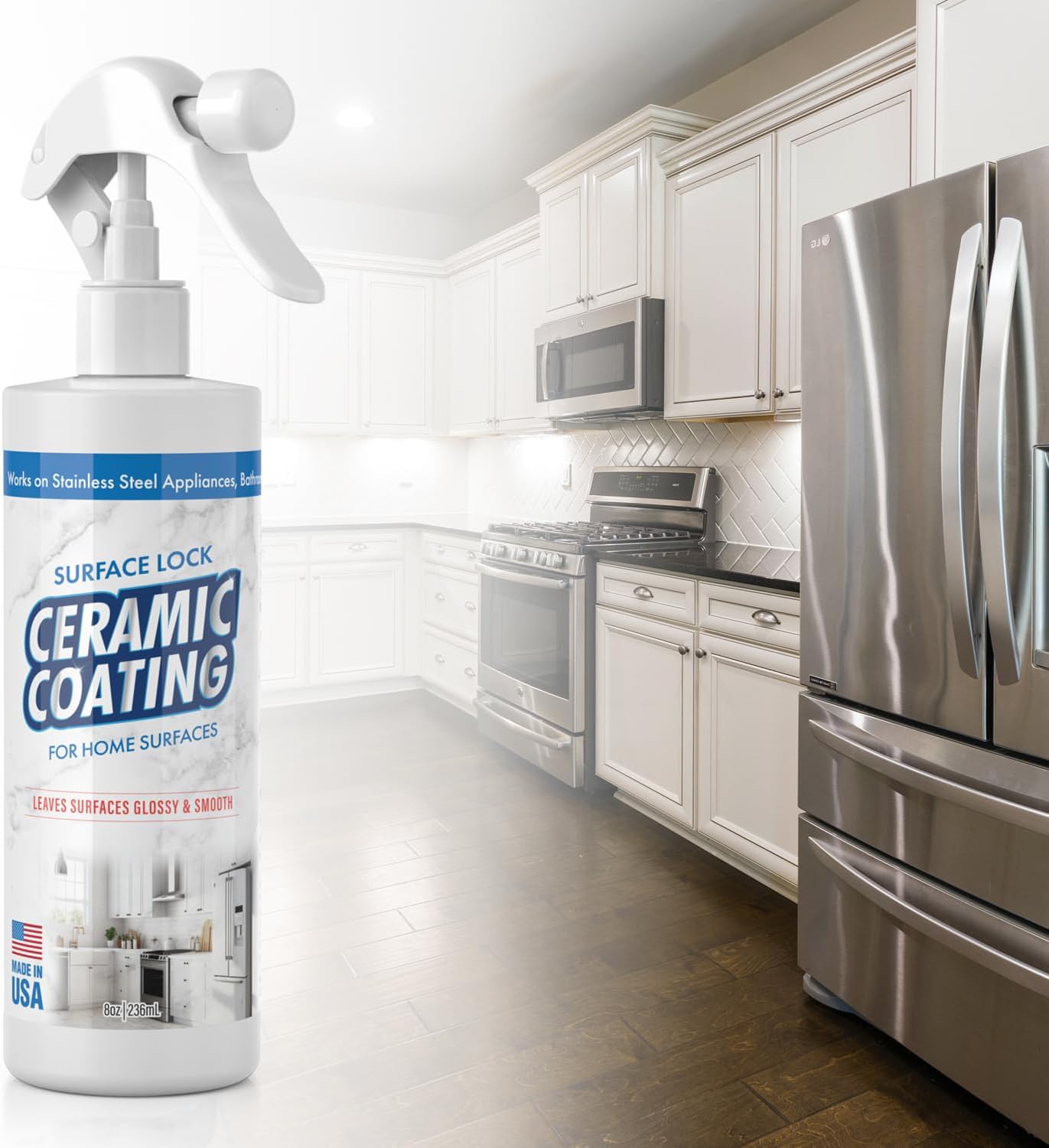In today’s pursuit of environmental sustainability and personalization, kitchen countertops made from recycled materials are becoming a popular choice for more and more families. They not only reduce resource waste but also give kitchen designs a unique visual appeal and storytelling. This article will introduce recycled countertop design concepts, material selection, practical applications, and considerations to help you create a kitchen space that is both beautiful and environmentally friendly.
1. Why are recycled countertops so popular?
Modern kitchens emphasize not only functionality and aesthetics but also sustainability. Recycled countertops contribute to the environment by utilizing discarded materials, reducing the extraction of new resources and construction waste. They often incorporate glass fragments, stone scraps, and even wood scraps, giving each countertop a unique texture and personality. This design is not only environmentally friendly but also preserves history and stories.
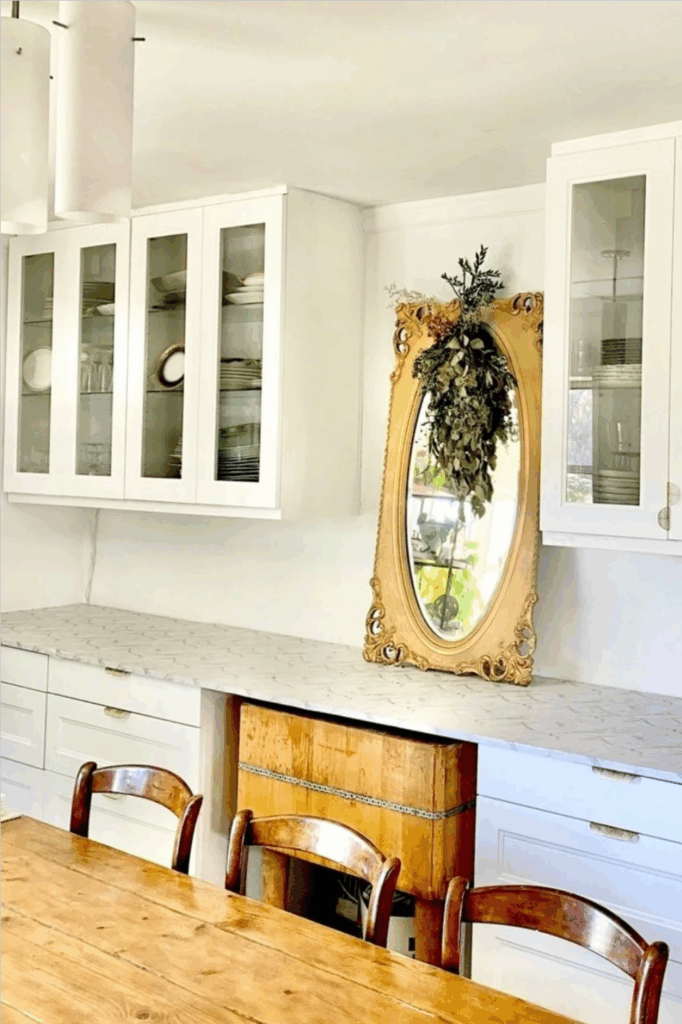
2. Common Recycled Countertop Materials
- Recycled Glass Countertops
Made from a composite of discarded glass fragments and cement or resin, they offer rich colors and textures, are durable and easy to clean, and have a smooth surface, making them ideal for modern kitchens. Its non-porous nature ensures antibacterial properties, making it suitable for cooking. - Recycled Stone and Concrete
Utilizing leftover stone or concrete from construction demolition, these materials are polished to create a new surface with a rugged, natural feel, perfect for industrial or country-style kitchens. - Recycled Wood or Composite Materials
Specially treated, old wood or paper composite panels impart a warm texture, lending the kitchen a warm and eco-friendly feel.
3. Practical Design Techniques
- Inspired by the Japanese art of Kintsugi
Some designers, drawing inspiration from Kintsugi techniques, stitch broken old quartz countertops with gold powder or gold resin to emphasize the beauty of imperfections, create a unique focal point, and add an artistic touch.
- Packing and Patterning
Recycled materials often need to be pieced together to create large countertop surfaces, offering room for design creativity. Cutting and piecing together create unique textures that are both practical and visually appealing.
Combined with modern manufacturing techniques
Laser cutting and precision edge sealing give recycled countertops industrial-grade precision and detail, ensuring both aesthetics and durability.
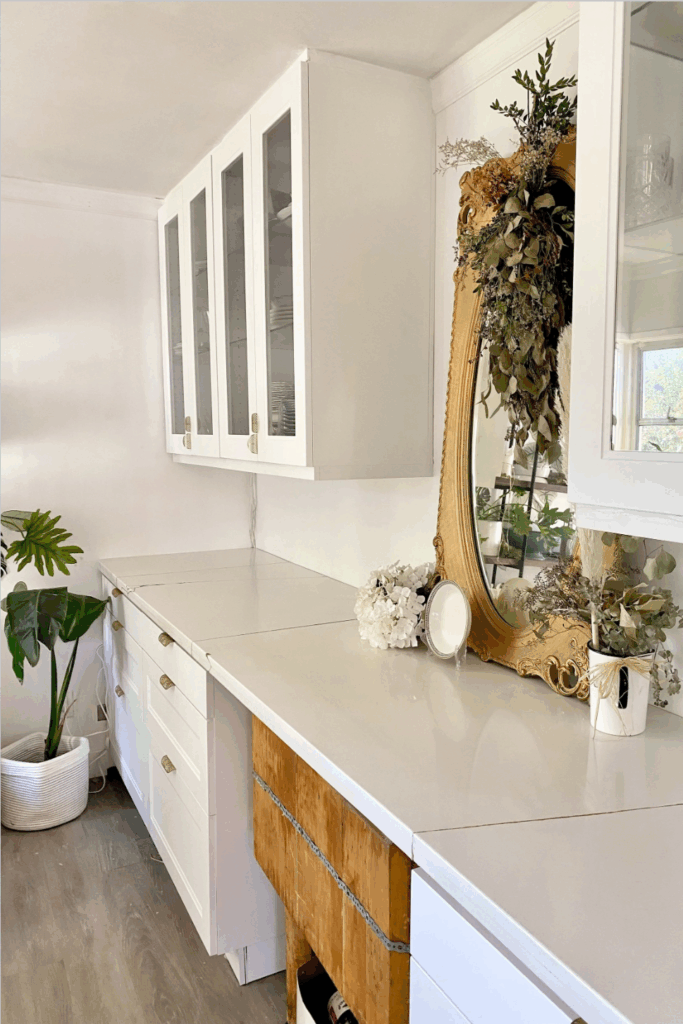
4. Advantages of Using Recycled Countertops
- Preserving the value of old items while reducing environmental impact.
- Durable, scratch-resistant, and heat-resistant.
- Unique appearance, each countertop is a work of art.
- Easy cleaning and maintenance, saving time.
- Helps create a distinctive, unique kitchen.
5. Important Notes
- The thickness and strength of recycled materials must meet countertop safety standards.
- Joints must be secure, waterproof, and durable to prevent cracking during daily use.
- Use appropriate adhesives to avoid yellowing or peeling, ensuring long-term beauty.
- Application requires experienced technicians to ensure overall quality and overall effectiveness.
- If intended for use as a countertop in a wet area, waterproofing and sealing are recommended in advance.
Recycled countertops are not only about reusing materials but also about integrating design with environmental protection. It showcases a modern family’s pursuit of a sustainable lifestyle and their unique understanding of personalized space. Through clever design and professional construction, old materials are given new life, transforming the kitchen into a space full of stories and beauty.
